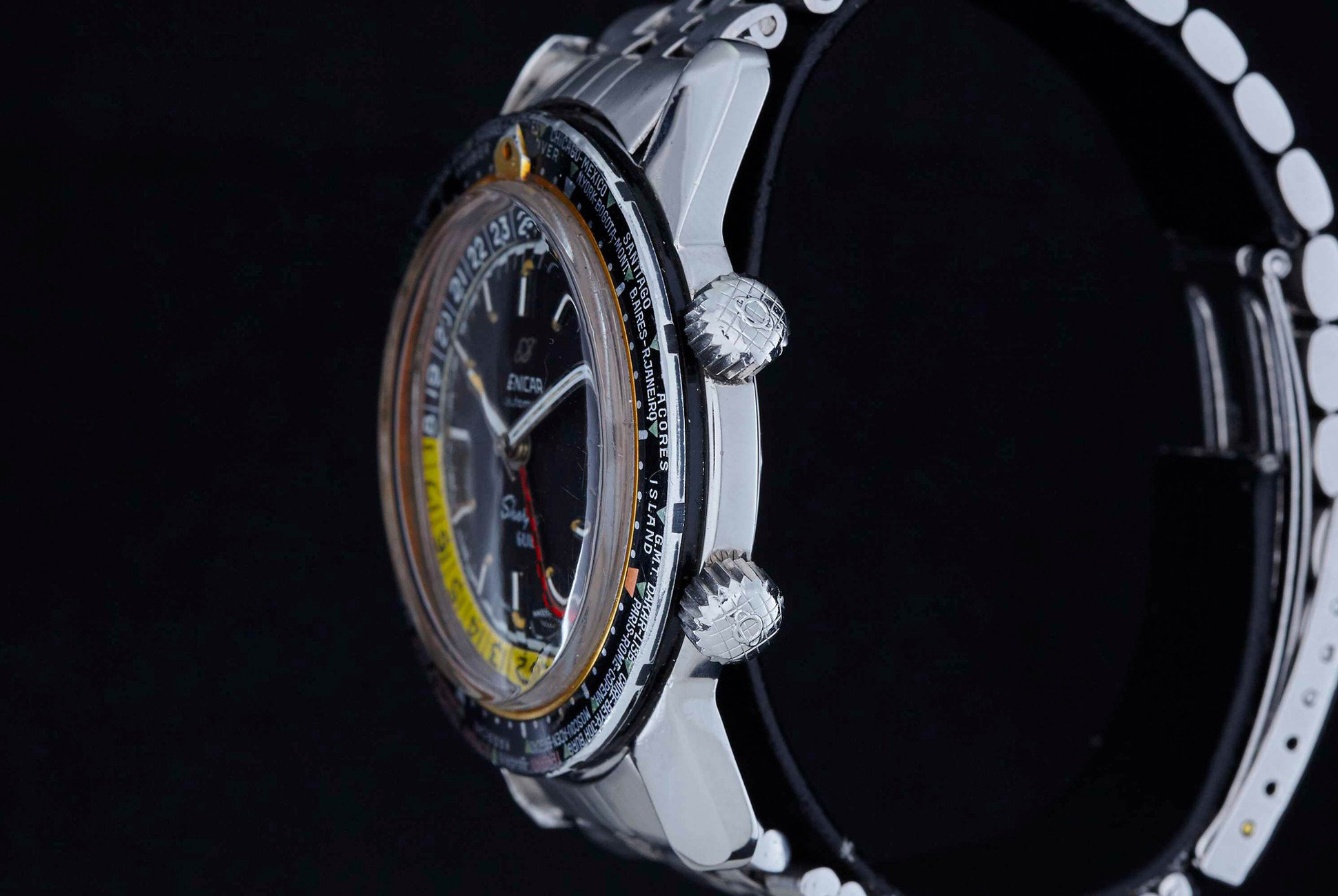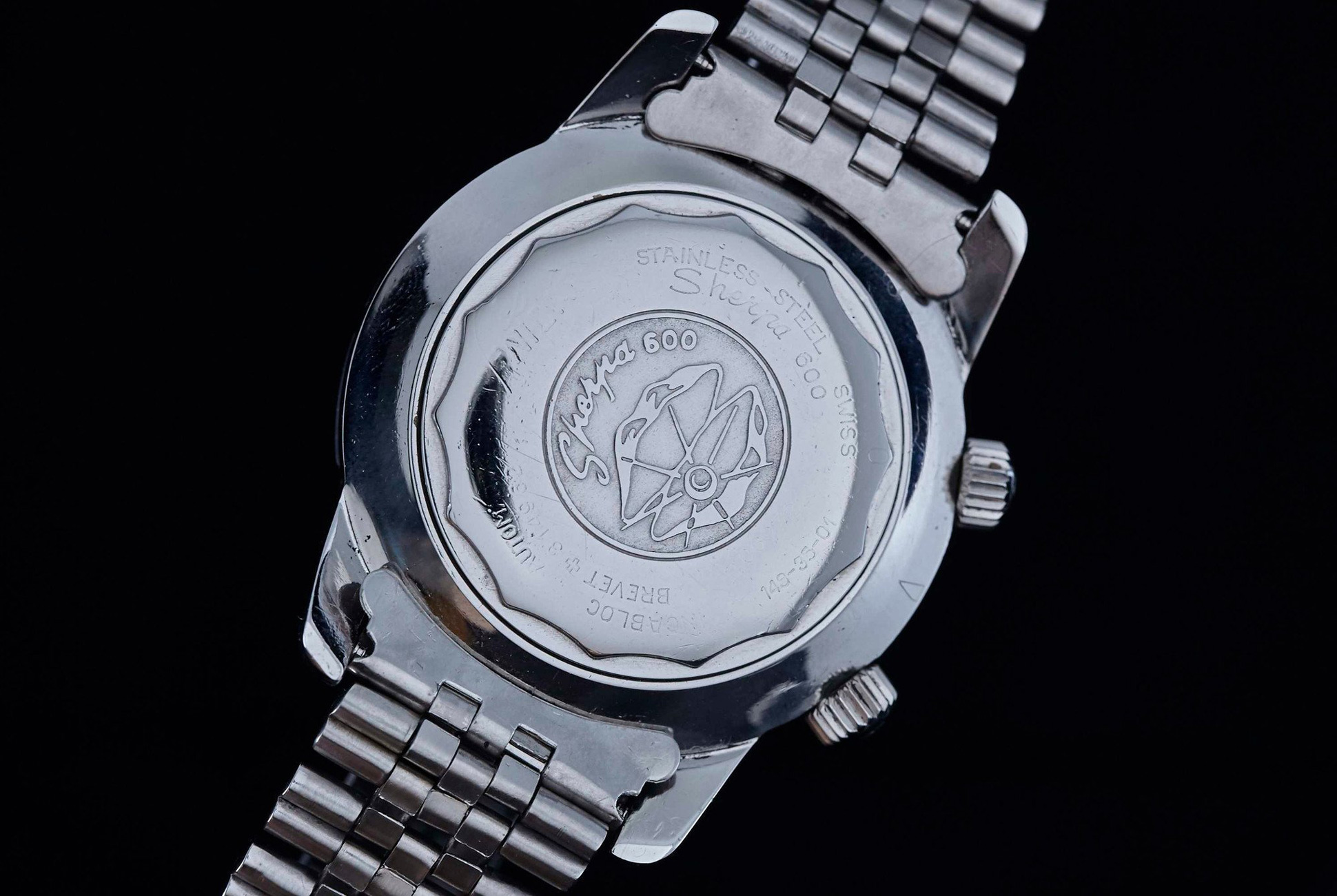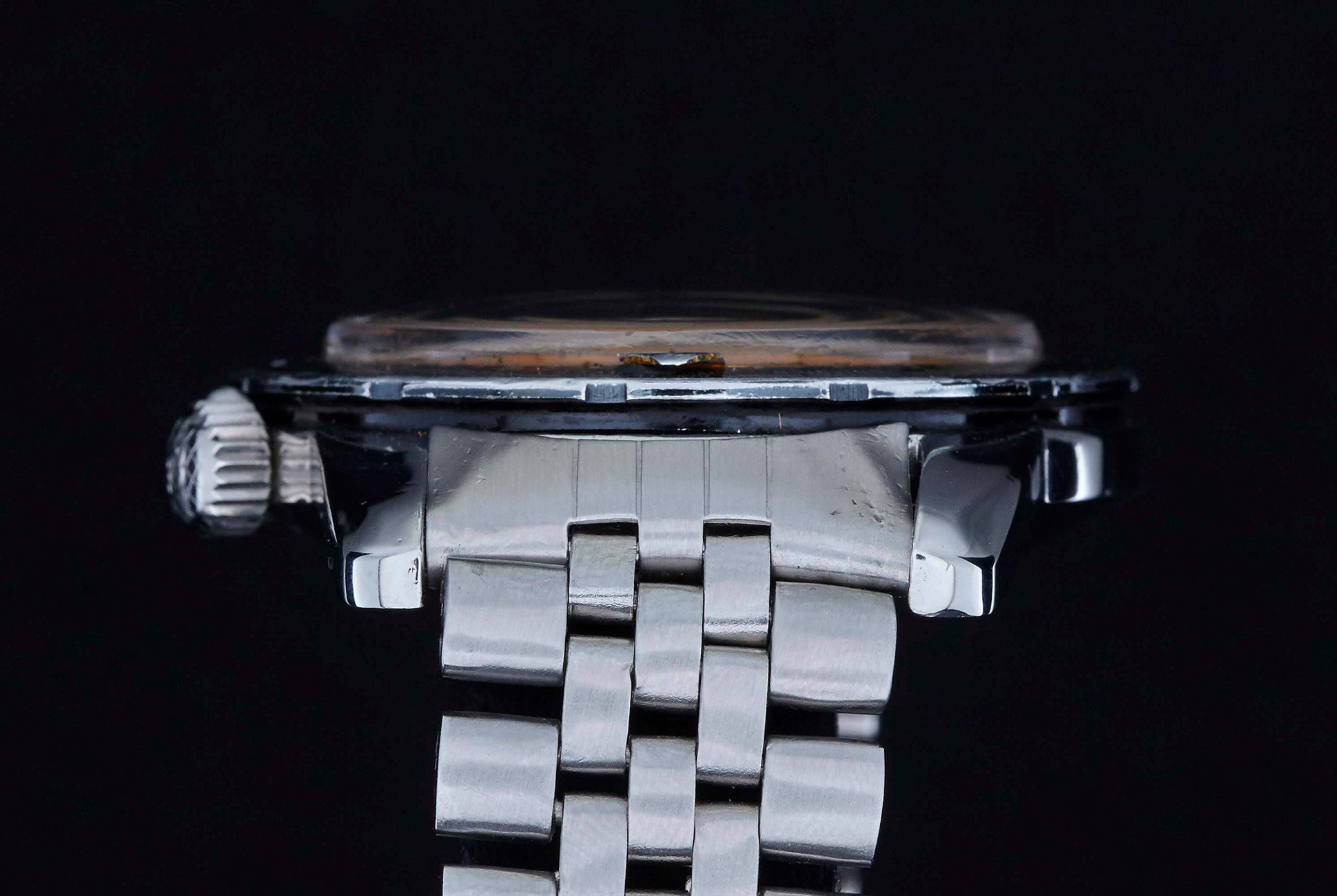The specific Enicar Sherpa Guide seen throughout this post was recently sold by Analog/Shift but we bet if you ask nice enough they’ll try and track one down for you.
The adventure watches of the ’50s and ’60s are the thing right now. Look at prices for old Submariners and Explorers and Speedmaster and tell me otherwise. But then again, these are the icons, and as most watch enthusiasts know the watch world was much bigger than what just Rolex and Omega were doing. If you were to look at Enicar’s offerings, for example, you’d find another illustrious history of adventuring in timekeeping. However, unless you’re deep in the watch nerd world, you probably never heard of the brand at all.
Enicar’s roots go back to the early 1900s, but as a brand, it wouldn’t hit its stride until the post-WWI years, when it started manufacturing its own movements — which it boasted as being “ultrasonically cleaned” — and venturing into tool watches. Arguably one of the most significant introductions during this time was the Seapearl 600 in the early 1950s, a time when the dive watch was entering the fray. The Seapearl, notably, didn’t feature a rotating timing bezel like the Submariner or Blancpain Fifty-Fathoms of the same era, but it was water-resistant to 600 feet and featured a dial smothered in lume.
In fact, the Seapearl was tested by the US Navy at the time and its performance underwater compared favorably to the Submariner and Fifty-Fathoms. However, the watch didn’t become standard issue. A report indicated the radioactivity from the lume was well over acceptable levels and the lack of a rotating bezel hindered its functionality. Also, they called the dial “gaudy and strange looking.” Ouch. Still, despite not becoming an issued watch, it was still a common fixture on divers’ wrists thanks to its water-tightness and lightweight build, according to Worn & Wound.

More important to watch lore, though, was the use of Enicar Seapearl watches on a Swiss expedition to scale both Mounts Everest and Lhotse in the Himalayas in 1956, just a couple years after Sir Edmond Hillary’s pioneering ascent. Enicar quickly capitalized on the success, touting the Seapearl’s success on Everest, adding the “Sherpa” moniker — a reference to Himalayan mountaineering guides — creating and subsequently an entire line of Sherpa tool watches. It’s these watches that have become the most sought-after in the brand’s history.
This spawned many desirable watches today, like the Sherpa Dive — which did feature a diving bezel — or the Sherpa Graph chronograph. But of these watches, arguably the most collectible today is the Sherpa Guide. Contrary to what the name might suggest, the watch was not intended for mountaineers, but rather aviators, and was introduced in the early 1960s, just as Rolex’s GMT watch was popularizing the travel complication amongst pilots and the jet set.

The Sherpa Guide had an adjustable 24-hour hand like the GMT but also had another ace up its sleeve: a rotating city bezel. The bezel, when manually rotated to correspond with the 24-hour hand, allowed the wearer to see all world time zones at once. You would set the 24-hour hand to the local time then rotate the bezel, so your time zone lined up with the hand. This, subsequently, lined up all the other time zones with their respective hour, giving you a quick reference to other world city times at a glance.
Adding to the watch’s allure was its striking look. There were several references of the Sherpa Guide, but most featured two-toned 24-hour rings, black bezels and red accents. Later versions added on more color; the Mark III and IV, specifically, featured a checkerboard-like 24-hour hand, a bright lance-shaped seconds hand and combined bright colors like red, yellow and blue. What’s more, coming in at well over 40mm, it was a real walloper for the time.
The later Sherpa Guides of the late ’60s and early ’70s also represent something of an end of an era for the brand. Enicar was part of the Swiss consortium that developed the Beta 21 quartz watch movement but didn’t fare well during the Quartz Crisis that ensued during the ’70s and ’80s. By the latter part of the ’80s, the brand went into insolvency and was sold to a Hong Kong-based company that still distributes its watches in Asia, a market where the brand had always been popular since it began distributing watches there in the early 20th century. It remains a staple there but fell into obscurity pretty much everywhere else.

As for the Sherpa Guide, it’s become an increasingly valuable watch to those in the know. Prices still remain somewhat accessible, but values for good examples are continuously going up. Look over at Chrono24 and you’ll see most examples hovering somewhere around $2,000 to $3,000. Still, that’s not a terrible ask for a bold pilot’s watch from a mountaineering-inspired lineup that came into existence because of a dive watch. It’s like a trifecta of vintage sports watch goodness in one timepiece.

